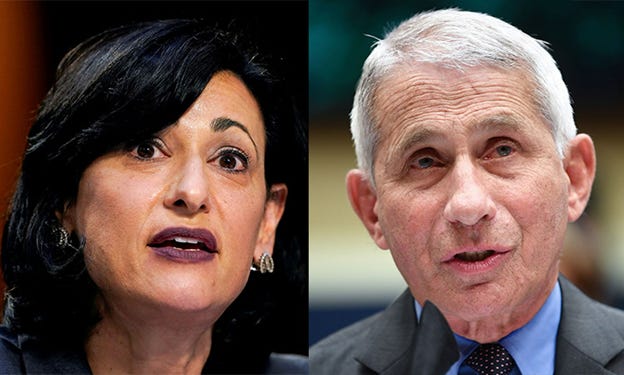The FDA approves boosters for minors – without testing boosters on minors
Age group testing? Zero.
Late last week, on December 9, the FDA approved the Emergency Use Authorization (EUA) for the Pfizer COVID-19 vaccine, “authorizing the use of a single booster dose for administration to individuals 16 and 17 years of age.” The booster is to be given at least 6 months after vaccination.
Before we get to the data the FDA cited in the booster for kids aged 16-17, let’s go through the facts:
COVID-19 is not a threat to teenagers aged 16-17. On October 25, we warned that the FDA was about to approve an experimental COVID-19 vaccine for children. It seemed unnecessary to give the EUA Pfizer vaccine to minors, as CDC data showed that for children aged 5-11 years-old, there have been 1.8 million COVID-19 cases and only 138 deaths. For older kids, from our own calculations, there have been approximately 3 million COVID-19 infections for those aged 12-18 years, leading to approximately 400 COVID-19 deaths in those ages. Children who get COVID-19 (including the age range approved for the latest booster) generally have less severe symptoms. Even the CDC concedes that “children are less likely to develop severe illness or die from COVID-19.”
The Pfizer vaccine is particularly dangerous for young men aged 16-17. As we observed back in October, teenage boys are especially at risk for heart problems – like myocarditis – after getting the Pfizer vaccine:
“Boys between 16 and 19 years of age had the highest incidence of myocarditis after the second dose . . . The risk of heart problems in boys of that age was about nine times higher than in unvaccinated boys of the same age.” New York Times.
The risk of myocarditis for boys 16 – 19 years old is higher after the Pfizer second dose. What happens after the third dose??
That’s a good question.
One would rightly assume that the third dose might present more danger of heart problems than the second dose. But FDA doesn’t have the answer to this question. And why doesn’t it have the answer?
Because the FDA didn’t look.
Because the FDA decided against holding an advisory meeting to discuss the decision.
Because the FDA required ZERO tests in this age bracket before approving the latest Pfizer booster for this age bracket.
Instead, the FDA relied on prior (old) booster data from a study of “200 participants, 18 through 55 years of age.” Choosing to ignore the long-term data for the efficacy of the Pfizer booster shot, the FDA instead reviewed the old data showing “the antibody response against the SARS-CoV-2 virus one month after a booster dose of the vaccine.”
That’s it. That’s the rigorous studies that now meet FDA standards. Given the self-imposed and purposeful limitations the FDA has placed on its own own information, it has the audacity to conclude:
“The benefits of a single booster dose of the Pfizer-BioNTech COVID-19 Vaccine or Comirnaty outweigh the risks of myocarditis and pericarditis in individuals 16 and 17 years of age to provide continued protection against COVID-19 and the associated serious consequences that can occur including hospitalization and death.”
This is the FDA making a cost/benefit calculation without knowing the costs or benefits. It doesn’t know the real risks because it didn’t study the potential for adverse reactions in kids aged 16 - 17 years. It doesn’t know the real benefits because it chose a shitty study that was limited to one month efficacy data.
This robust FDA cost/benefit calculation might sound familiar to our loyal readers. That would be because the Government did the same thing when recommending the COVID-19 vaccines for “people who are pregnant.”




The “FDA Approved” endorsement means absolutely nothing now.
Myocarditis for you, some pericarditis for you, some neurological damage for you, blood clots for you. A little something for everyone!